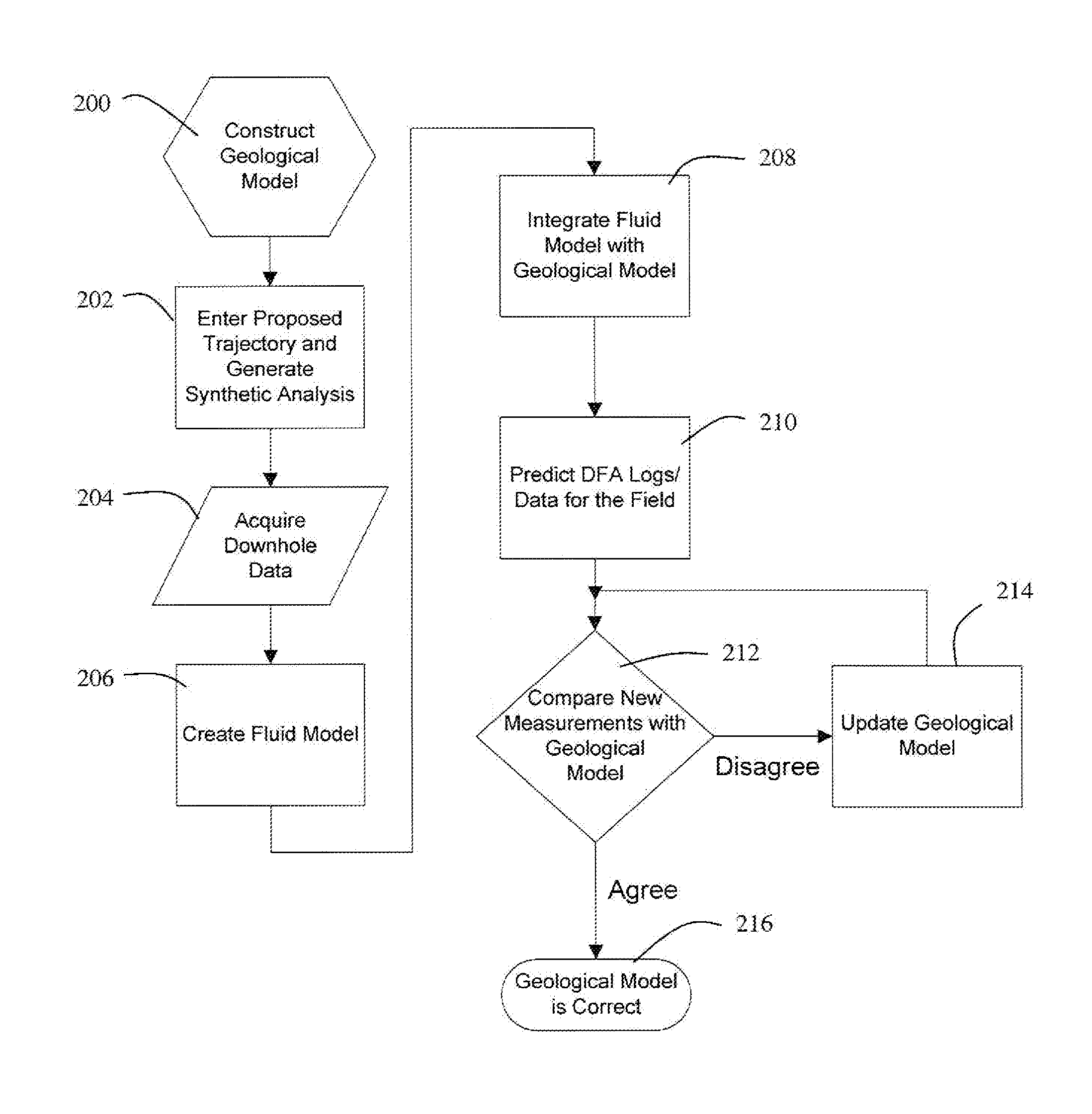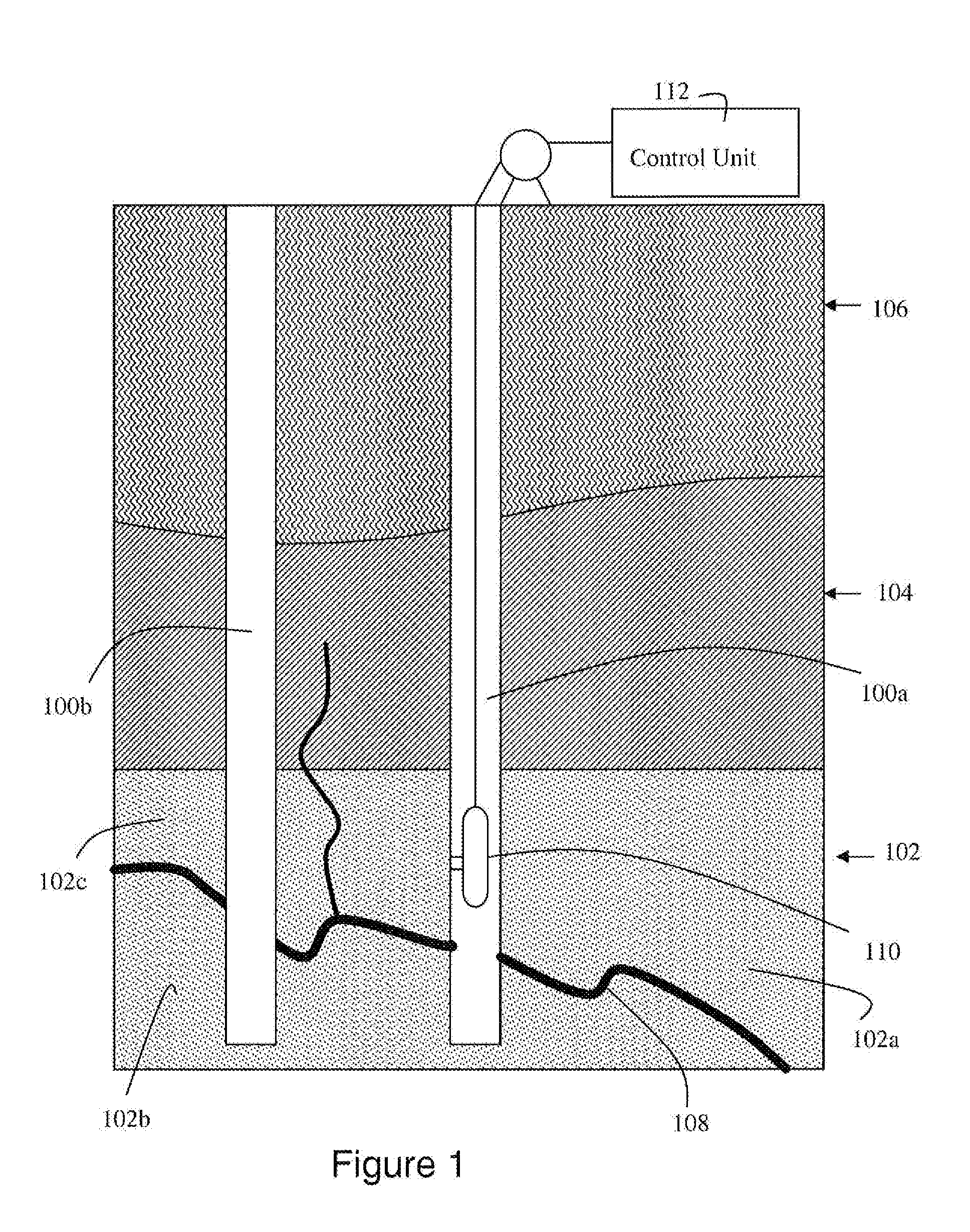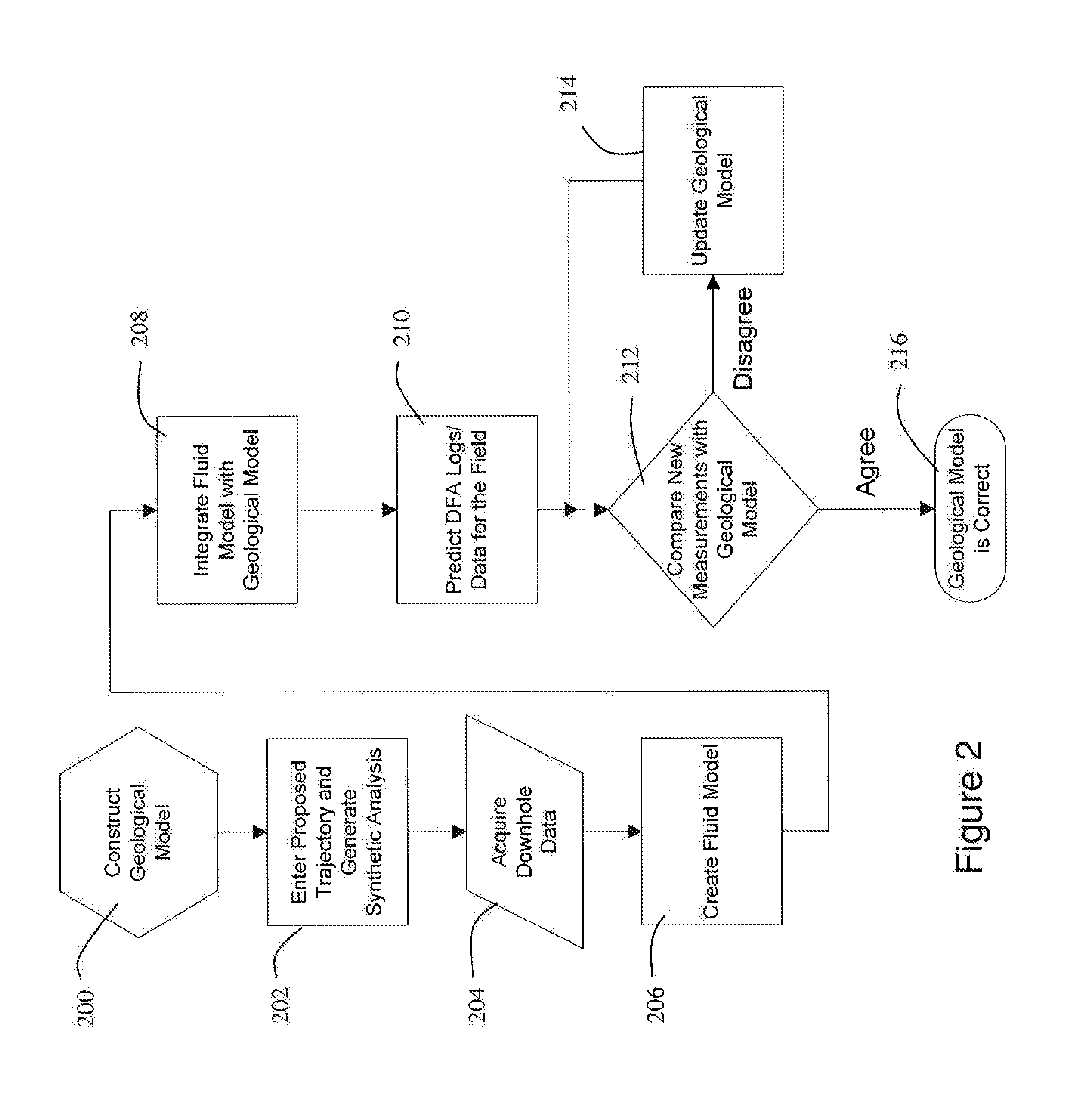Facilitating oilfield development with downhole fluid analysis
a technology of fluid analysis and oilfield development, applied in the field of oil and gas wells, can solve the problems of limited use of coarsened geological models, low confidence in these models, and insufficient availability of known reservoir simulation models. , to achieve the effect of improving exploration and field developmen
- Summary
- Abstract
- Description
- Claims
- Application Information
AI Technical Summary
Benefits of technology
Problems solved by technology
Method used
Image
Examples
Embodiment Construction
[0016]FIG. 1 illustrates boreholes (100a, 100b) drilled in a hydrocarbon field. The formation surrounding the borehole includes a hydraulically permeable layer (102) below an impermeable layer (104), and various other layers which make up the overburden (106) (not shown to scale in FIG. 1). Natural features such as a relatively thin impermeable layer (108) hydraulically isolates regions (102a, 102b, 102c) of the permeable layer, e.g., vertically, horizontally or both, such that the field is actually an aggregation of relatively small reservoirs. It will be appreciated that a well configured for recovery from only one of the hydraulically isolated reservoir will not recover fluid from another isolated reservoir.
[0017] A fluid analysis tool (110) is utilized to test fluid from the formation adjacent to the borehole (100a) in order to help identify locations of hydraulically isolated regions and other features. Differences in pressure and fluid properties generally indicate lack of hy...
PUM
 Login to View More
Login to View More Abstract
Description
Claims
Application Information
 Login to View More
Login to View More - R&D
- Intellectual Property
- Life Sciences
- Materials
- Tech Scout
- Unparalleled Data Quality
- Higher Quality Content
- 60% Fewer Hallucinations
Browse by: Latest US Patents, China's latest patents, Technical Efficacy Thesaurus, Application Domain, Technology Topic, Popular Technical Reports.
© 2025 PatSnap. All rights reserved.Legal|Privacy policy|Modern Slavery Act Transparency Statement|Sitemap|About US| Contact US: help@patsnap.com



